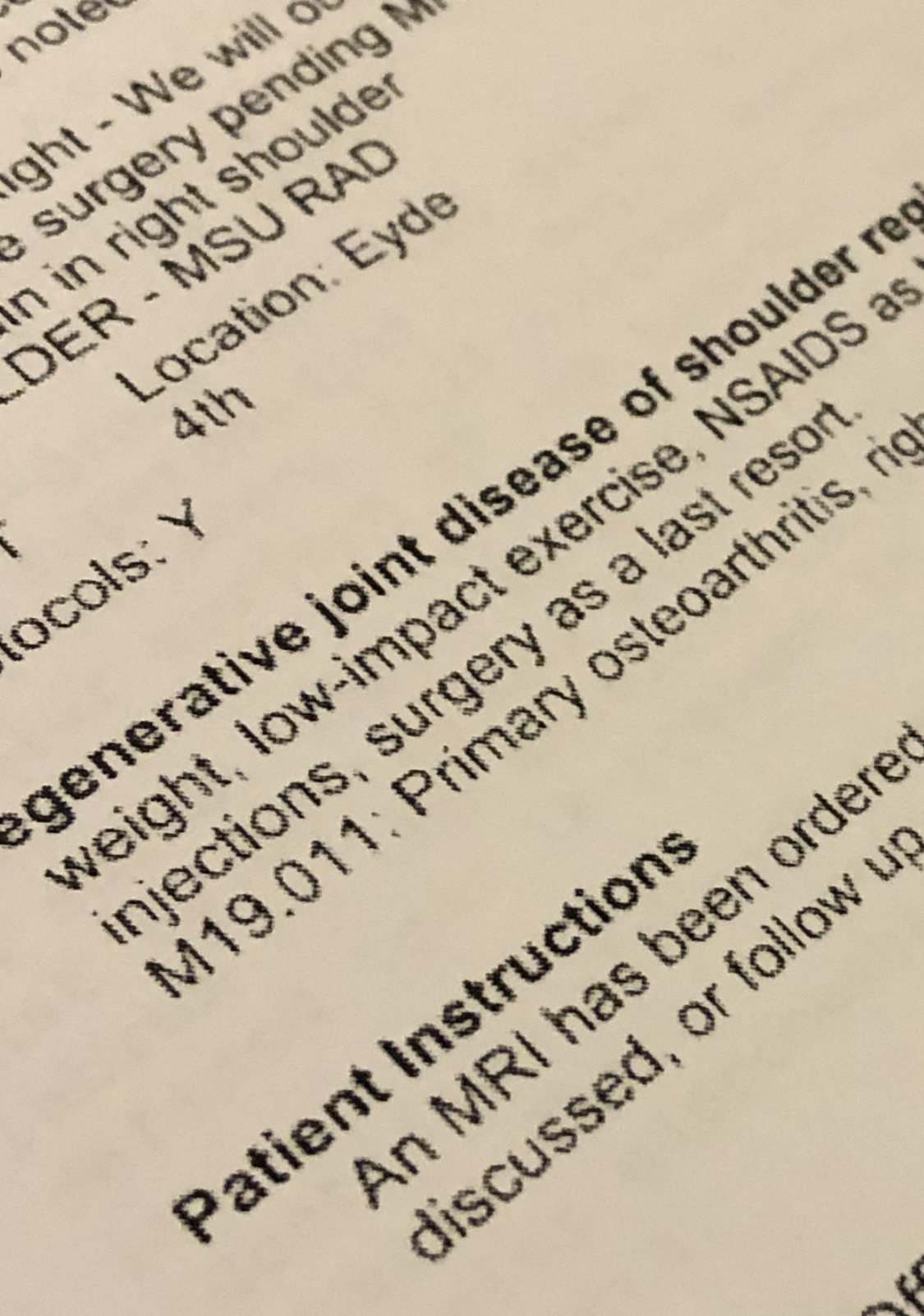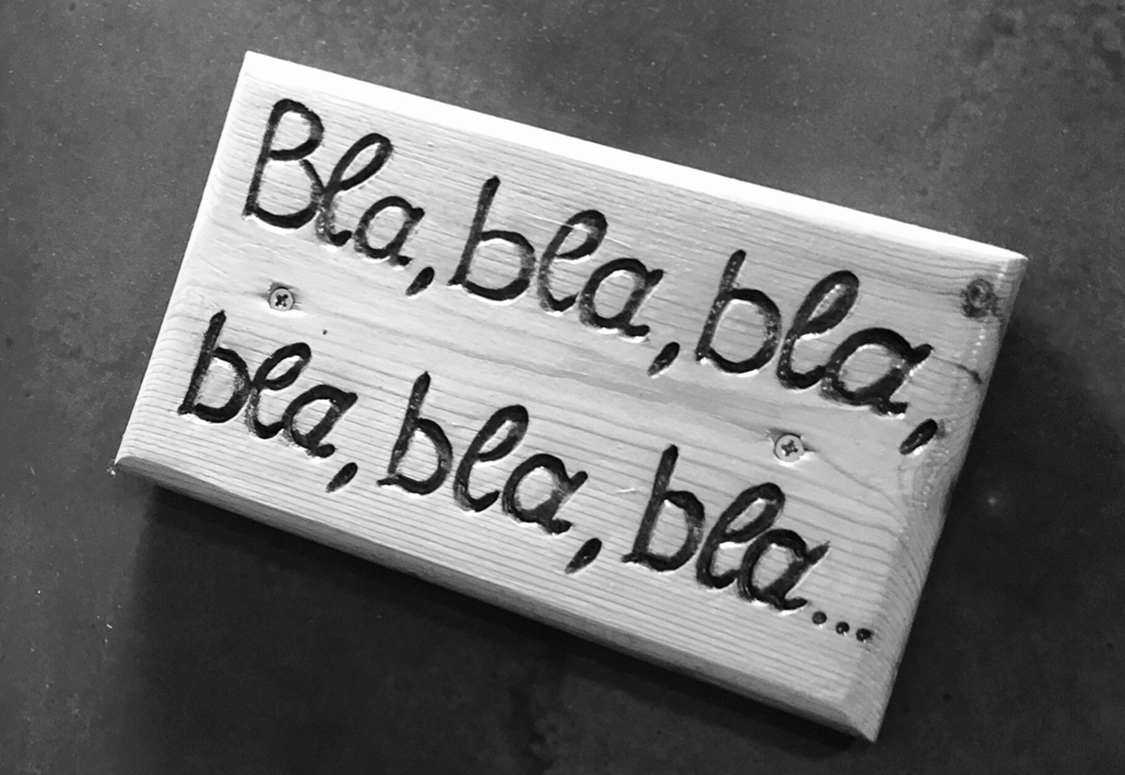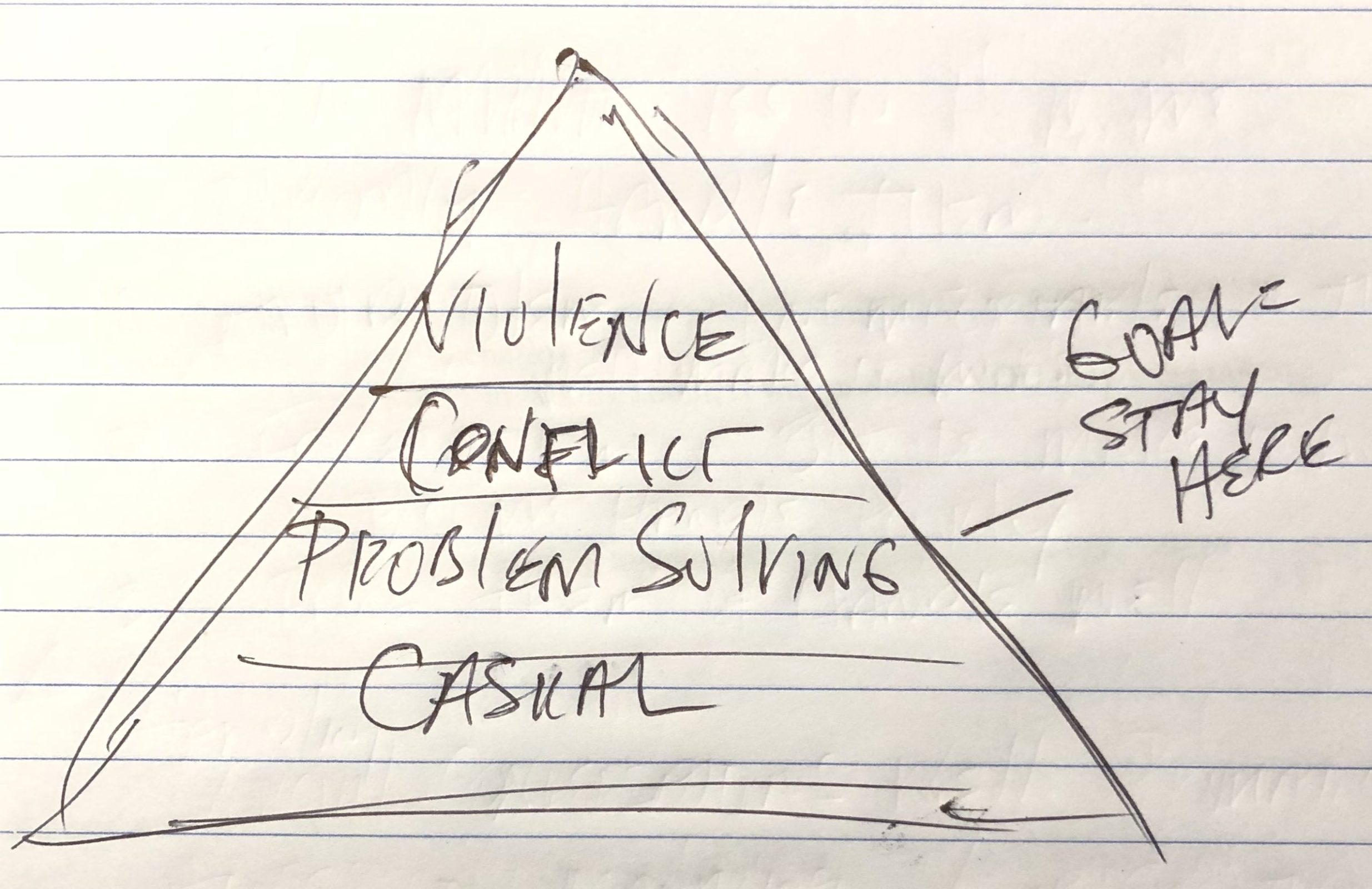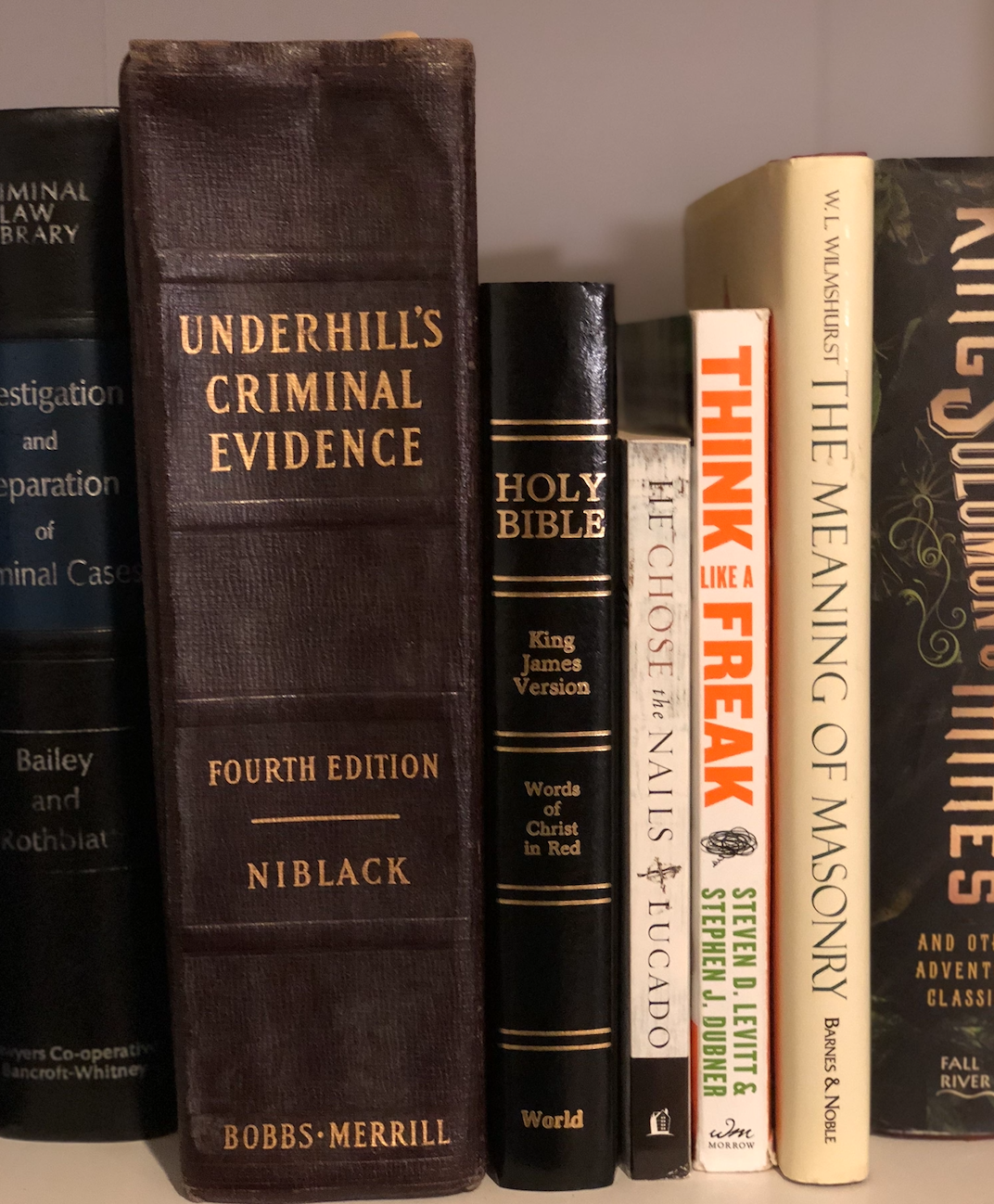

#thanksgiving





No Pain, No Gain! A familiar expression barked by trainers, a well-used mantra for gym-rats. From a muscular development or fitness improvement standpoint it’s true. It’s tough to make gains if you don’t push yourself, and pushing hurts sometimes. As someone who has suffered from chronic headaches and migraines since adolescence, unfortunately I know pain without gain well…and finding ways to press on has been the only option. But I’ve recently been reminded ‘working through’ pain is not always best.
In an effort to find a cause and eliminate what no one wanted to talk about, around the first or second grade (early 1970s), I was subjected to a brain scan. It was a fairly horrifying experience for a little guy, where dozens of wires were poked into the scalp all over my head. It was made worse by A) the probes kept falling out, so they were poked into my skin and then glued to my head; B) a scary-looking, impatient, unsympathetic nurse ripped half my hair out trying to remove the glue afterwards. I’m not sure I ever screamed and cried so much before or since.
I think I had endured an Electroencephalogram. MRIs weren’t quite on the scene yet, but honestly those aren’t my favorite way to spend an afternoon, either. The good news is there was no tumor, aneurysm, or anything else that concerned doctors. The bad news is 1) there was no explanation for the already chronic headaches I still have to this day, and 2) my dad had the perfect lifelong icebreaker and punchline at my expense: “They did a brain scan on David, but they didn’t find anything!” Figuring 45 years of persistent headaches can’t be a good thing, I had a MRI done last year, just in case. Dad: “How did your brain scan come out?” Me: “Good.” Dad: “They didn’t find anything, huh?!” It never gets old.

Chronic intense pain has nearly always been a ‘normal‘ part of my life.
On the bright side, pain is one of the body’s sensors to indicate something is wrong. In his book “Where is God When it Hurts?” Philip Yancey reminds us “Pain sensors loudly alert [our bodies] to danger…”. He says absent pain’s warning, or ignoring or silencing it without heeding it, is dangerous and can lead to greater harm. That’s where the not-so-bright-side comes in.
Ignoring pain, pushing through, deadening it, or turning it off altogether is dangerous and undermines the body’s natural warning systems. Like removing the batteries from your smoke detector or putting tape over your check-engine light because you’re tired of looking at it. Too often we get into the habit of treating pain’s symptoms and ignoring the root cause. This can be through medication, alcohol, or living with reckless abandon. The result is often more damage. Pain is telling us something. We are wise to listen.
I’m not just talking about physical pain.
I have become so accustomed to living with the pain of migraines that when other things hurt, I just try to ignore or deaden it until it subsides. Sometimes it persists so long that it gets drowned out in the ‘noise’ for a period of time it’s not as noticeable. Like people living near railroad tracks or the effect white noise can have on the constant ringing in my ears. But, like ignoring emotional pain that needed attention and psychological pain from unresolved vicarious trauma, I’ve learned pushing through the pain of degenerative joint disease (advanced arthritis) in my shoulder just causes more damage. Not only has the result been near constant discomfort and improper functioning, failure to properly deal it has weakened the surrounding structures.

In just a few weeks of physical therapy I have come to understand I can’t ‘fix’ this arthritis…I’ll live with shoulder pain the rest of my life. But I can strengthen the right areas, re-teach myself proper alignment and function, and learn to listen and respond appropriately to pain. Sometimes that means not pushing through discomfort.
I’m not just talking about my shoulder.
There’s something to be learned from this about pain in our lives; physical, emotional, psychological, or otherwise.
“Like a grain of sand or other irritating substance that finds its way into the shell of an oyster eventually leads to creation of a beautiful pearl; so an injury, irritation, or wrong in our life can become a great blessing and the means to enrich us.” – Karl P. Buswell
My prayer is that you will somehow find blessing in your pain.
Get Strong. Be Strong. Stay Strong.
Yancey, Philip. (1990). Where is God when it hurts. Grand Rapids, MI: Zondervan.

All gave some, Some gave all.
Memorial Day honors those who gave ‘all’; today honors the rest of us who gave ‘some’ – often more than many people understand.
Today, BeyondStrength.Org honors you and thanks you for your service.


Spend any time around the military, in particular those in more ‘operational’ specialties, and you’ve probably heard prolonged discourse between members in some sort of grunting, identifiable by the root sound “hoo-ah“. This language is ubiquitous across service branches to exclaim, motivate, question, acknowledge, or agree.
From my observations over 32 years of military service, it breaks down something like this: USMC = Oorah or Hoorah; Army = Huah or Hooah; USAF = Hua or Huah.
Admittedly biased, I ascribe to an unverified report the sound and defacto meaning originates from the USAF version wherein operators used “Hua” as a communication pro-word to shorten radio transmission time acknowledging the message was ‘heard, understood, and acknowledged’ (HUA). A Google search will no doubt provide ample contradiction to its origins, and confirm your belief that I am full of hooey (not to be confused with above).

This article is about more than the ad hoc phonic of snake-eaters. It’s about the challenges of interpersonal and organizational communication. And it’s not just a lack of that’s the problem. For instance, Air Force Handbook 33-337, The Tongue and Quill, states that “For communication to be successful, the audience must not only get the message, but must interpret the message in the way the sender intended.” It’s true what my friend Terry always said: it’s not so much what I say, but my delivery that is sometimes the problem. Maybe that’s a problem in organizations, too.
Some are very good at communicating and some are not. Having experienced, present day included, the effects of poor organizational communication, I strive to do the best I can as a leader to be the former. Too often, leaders hold information hostage as if it will somehow weaken their position or undermine their authority if shared with subordinates. While there will always be circumstances not everything can be shared or is known, the vast majority of instances I’ve found it’s better to be direct, transparent, and even over-communicate, than to withhold.
Withholding information causes people to question motives and to create their own narrative – which may or may not be accurate. Rumors, misinformation, and distrust run rampant in organizations where leaders poorly communicate. Those leaders often believe ‘information is power’, and withhold it or wield it like a lever to retain control or to control others. And ‘controlling’ is neither a respected leader characteristic nor an endearing relationship quality.
I’ve found those who operate that way or control others by withholding information are often the same types of people who are insecure in their ability to lead; threatened by others’ success; or underestimate their people. Organizations are made up of bright, mature, competent professionals anxious to help it succeed. They can handle the truth, and respect a leader who tells it like it is…even if it’s bad news or the information might change later.
What they don’t respect, nor appreciate, is being kept in the dark.
Communication is difficult in the best of times, so it’s easy to see how remote-work compounds the problem. Isolation, home internet, diminished ability to read body language or facial expressions, and a host of other issues seldom considered before lockdown challenge today’s communication.
Side note: have you found yourself wondering whether video avoidance on remote meetings is a bandwidth issue, privacy concern, or maybe a matter of having ‘let oneself go’ a bit the last six months working from home?! Admittedly, I have gotten quite comfortable skipping the razor and being minimally attired…no shirt, no shoes, no problem! Except when I’m one minute out from a video call and two floors away from my closet…
Notwithstanding these current isolation, self-care, lack of face-to-face interaction, or technological impacts, even normal communication is impacted by varying expectations of necessity, purpose, and audience. Is it intended to direct, inform, or persuade? Does your audience need to know, or just want to know?
Whatever the intent or purpose, solving organizational communication involves asking myself, “Does everyone in my sphere of influence know or have the information they should about the subject?” If the answer is no, why not?
It wasn’t communicated? They weren’t paying attention? They heard but didn’t listen? They listened but couldn’t hear? Was it lost in translation? How does chain of command or hierarchy factor in? If supervisors are given the information but fail to pass it along to their people, is that the originator’s problem?
What about texting or social media? Have you seen (or been victim to) ‘auto-correct gone bad’?
Just the other day I sent a text intending to make light of a situation, but I failed to insert the ‘eye-roll’ emoji at the end. Just that simple oversight led to an entire day of tension and silent treatment. (Insert eye-roll)
Like other challenges, maybe there’s no easy answer to solving communication problems. But I have found timeliness, openness, transparency, and over-communicating helps.
As does trying hard for my walk match my talk, but extending grace where possible knowing my own propensity to get it wrong sometimes.
Can you hear me now?

Get Strong. Be Strong. Stay Strong.
AFH 33-337, The Tongue and Quill, retrieved from https://static.e-publishing.af.mil/

“What’s your problem?!?” I know you’ve been asked that. Maybe you’ve uttered those words yourself, right before realizing things were about to go south. It’s a legitimate question, but one that’s usually asked in the wrong tone at the wrong time.
I have been asking myself that question for weeks now. While I usually ask it when struggling with my thought life or downswings in my mood or attitude, recently it’s been related to my lack of motivation to write an article. The solution came after talking to my friend. He experienced similar ‘writers block’ as he contemplated the much more significant purpose of drafting his brother’s (and our bandmate’s) eulogy. He tells me he awoke in the middle of the night and just started writing.
History repeated itself in a sense, for as chatting with him was part of my solution here, he likewise helped me move from problem to solution a few years ago when he convinced me to join his band to help me recover from a dark time in my life.
Problem: They needed a drummer (I didn’t play drums).
Solution: Now I do.
It would be easy to swing at the softball floating toward home plate courtesy of the pandemic right now. After all, the current medical-social-political-economic finger-pointing circus supplies ample example; there is no shortage of those who are part of the problem. The good news is, there are just as many who are working hard to be part of the solution.
Besides people who barely passed high school math suddenly knowing more about infectious disease than actual scientists and doctors, people who are part of the problem do things like this: litter; don’t scoop their dog’s poop; procrastinate excessively; blame others; engage in cronyism and favoritism; fail to learn from mistakes; are inconsiderate or entitled (typically related); leave their shopping cart parked where cars are supposed to; pretend to care about people.


They may also fail to recognize (or care) they are part of the problem.
Here are a few ideas to be more of a solution:
Bystander intervention, being kind, considerate, polite, old-fashioned, or a Good Samaritan. Whatever you call it, consider this: “Suppose a brother or a sister is without clothes and daily food. If one of you says to them, ‘Go in peace; keep warm and well fed,’ but does nothing about their physical needs, what good is it?” That’s from the second chapter of James, where he relates that faith, when not accompanied by works, is dead. Even the secular rock band A Perfect Circle seems to get it. Consider these excerpted lyrics from ‘Talk Talk’:
You’re waiting…On miracles…We’re bleeding out
While you deliberate…Bodies accumulate Sit and talk like Jesus…Try walkin’ like Jesus
Don’t be the problem, be the solution
Faith without works is, Talk without works is
Faith without works is Dead, dead, dead, dead
Try braving the rain, Try lifting the stone, Try extending a hand
Try walkin’ your talk or get the f**k out of my way
The Christian band Casting Crowns likewise addresses not walking the talk in their song ‘If We are the Body’:
But if we are the body, why aren’t his arms reaching? Why aren’t his hands healing? Why aren’t his words teaching? And if we are the body, why aren’t his feet going? Why is his love not showing them there is a way?
There is so much more I need to say about this subject, but I’ve already overstayed my welcome.
If you are a so-called leader who plays favorites, cares only about what benefits you, or creates problems where (or because) none exist, you’re part of the problem. Leadership involves solving problems, not creating them.
Be part of the solution.
Get Strong. Be Strong. Stay Strong.
Lyrics retrieved from https://www.lyricfind.com





Why is it major events, places, or points in history have such an array of narratives questioning the legitimacy of origin, details, or purpose? And why is it these other theories nearly always involve negative, malicious, or intentionally nefarious opposition? I guess that’s why they’re called conspiracy theories. Here’s just a few that come to mind.
The assassinations of JFK and Martin Luther King Jr.; Area 51, Roswell, and UFOs in general; Bigfoot and the Loch Ness monster; the death or disappearance of people like Jimmy Hoffa, Amelia Earhart, and Elvis Presley; Cheyenne Mountain, a ‘mind-controlling’ Alaska research facility, and the Denver Airport; even some natural disasters like the tornado in Joplin, Missouri have conspiracies surrounding them. Other popular subjects include Freemasonry, crop circles, secret societies, document markings, and Mount Rushmore.
Recently, election interference and virtually everything surrounding COVID-19 have generated rife theories of conspiracy or malfeasance. Conspiracies make for great entertainment, but can also cause great divisiveness. Still, there is something to be said for not just believing everything we hear. One might even think healthy skepticism and respectful questioning of the status quo are forms of checks and balances. After all, the founding fathers baked it into the United States Constitution; governments around the world succeed because if it; and successful businesses prosper when it’s done right.
But wouldn’t it be nice if people spent more time, energy, and effort in the chatrooms and social media underworld concocting equally outlandish theories that change the world in a positive way?
I don’t like admitting this, but lately I’ve become increasingly cynical; skeptical of motives and critical of decisions. Quite frankly it’s made me a little edgy, and I don’t like it. Maybe it’s increased workload, isolation and separation, stress and uncertainty of the pandemic, doubts about its handling, or a multitude of things compounding into a perfect storm of flapdoodle. Regardless, I clearly need to pray more and dwell on a few ‘conspiracies of good’ for a while.
Let me share a few positive affirmations and plot a way to extricate myself from this funk. Co-conspirators are welcome.
“God may not always keep us out of hard places, but he is always with us. A hard place with him is better than an easy place without him.” (David Jeremiah)
“It is good for me to have been afflicted, that I might know how to speak a word in season to one who is weary.” (Charles Spurgeon)
“Endurance is the fortitude to carry on in the face of extreme difficulty.” (Don Denyes)
“There is no pit so deep that God’s love is not deeper still.” (Corrie ten Boom)
“Let us not become weary in doing good, for at the proper time we will reap a harvest if we do not give up.” (Galatians 6.9)
“Whatever is true, whatever is noble, whatever is right, whatever is pure, whatever is lovely, whatever is admirable…think on these things.” (Philippians 4.8)
Maybe conspiracy theories do more harm than good, or perhaps they really do help maintain proper balance in the world. Either way, it can take years for the truth to be revealed…and even then there will be those who doubt.
Consider that besides the official record of the Warren Commission, a senior research scientist using the latest technologies corroborated it by determining Lee Harvey Oswald did, in fact, shoot President Kennedy from behind, and from a sixth-floor window of the Texas School Book Depository. Yet conspiracies like the grassy knoll still exist and will likely always surround the 1963 assassination of JFK.
Likewise, when Pontius Pilate’s name was found inscribed on a stone tablet unearthed in Caesarea late 1960s, it should have silenced theories that he never existed and thus could not have sentenced a man named Jesus to die on a cross. More evidence was discovered when recent breakthroughs in cleaning and image rendering also revealed Pilate’s name on a ring found at Herodium. Despite these historical discoveries, doubt, unbelief, and other theories will continue to question the existence of both men until the day all is made known.
Blessed are those who have not seen and yet have believed.

Do you ever feel that life is conspiring against you as some cosmic joke or social experiment to rid you of your hope or positivity? Maybe, like most conspiracy theories’ effect on the original issue, I’m overcomplicating this. After all, Levitt and Dubner wrote in their book Think Like a Freak, “It’s easy to get seduced by complexity; but there is virtue in simplicity too.”
Will you be my accomplice in the simply virtuous mission of conspiring for good?
Get Strong. Be Strong. Stay Strong.
Levitt, S. D., & Dubner, S. J. (2014). Think like a freak. New York, NY: HarperCollins.